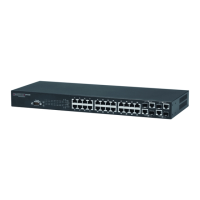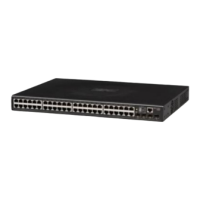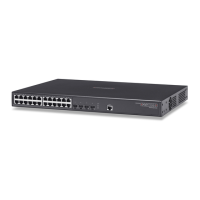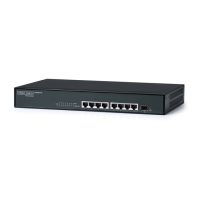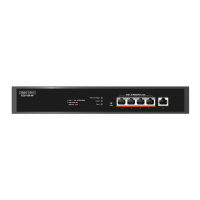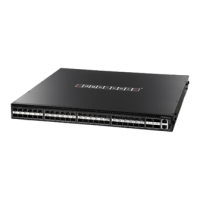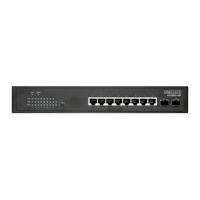C
HAPTER
21
| System Management Commands
File Management
– 532 –
EXAMPLE
This example shows the information displayed by the whichboot
command. See the table under the dir command for a description of the
file information displayed by this command.
Console#whichboot
File Name Type Startup Modify Time Size(bytes)
-------------------------------- ------- ------- ------------------- ----------
Unit 1:
es3510ma_1.1.4.9.bix OpCode Y 2010-04-20 02:48:53 11466876
startup1.cfg Config Y 2010-10-29 12:09:47 1716
Console#
upgrade opcode
auto
This command automatically upgrades the current operational code when a
new version is detected on the server indicated by the upgrade opcode
path command. Use the no form of this command to restore the default
setting.
SYNTAX
[no] upgrade opcode auto
DEFAULT SETTING
Disabled
COMMAND MODE
Global Configuration
COMMAND USAGE
◆ This command is used to enable or disable automatic upgrade of the
operational code. When the switch starts up and automatic image
upgrade is enabled by this command, the switch will follow these steps
when it boots up:
1. It will search for a new version of the image at the location specified
by upgrade opcode path command. The name for the new image
stored on the TFTP server must be es3510ma.bix. If the switch
detects a code version newer than the one currently in use, it will
download the new image. If two code images are already stored in
the switch, the image not set to start up the system will be
overwritten by the new version.
2. After the image has been downloaded, the switch will send a trap
message to log whether or not the upgrade operation was
successful.
3. It sets the new version as the startup image.
4. It then restarts the system to start using the new image.
◆ Any changes made to the default setting can be displayed with the
show running-config or show startup-config commands.

